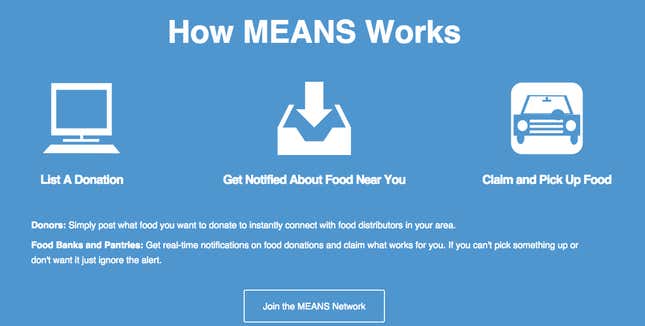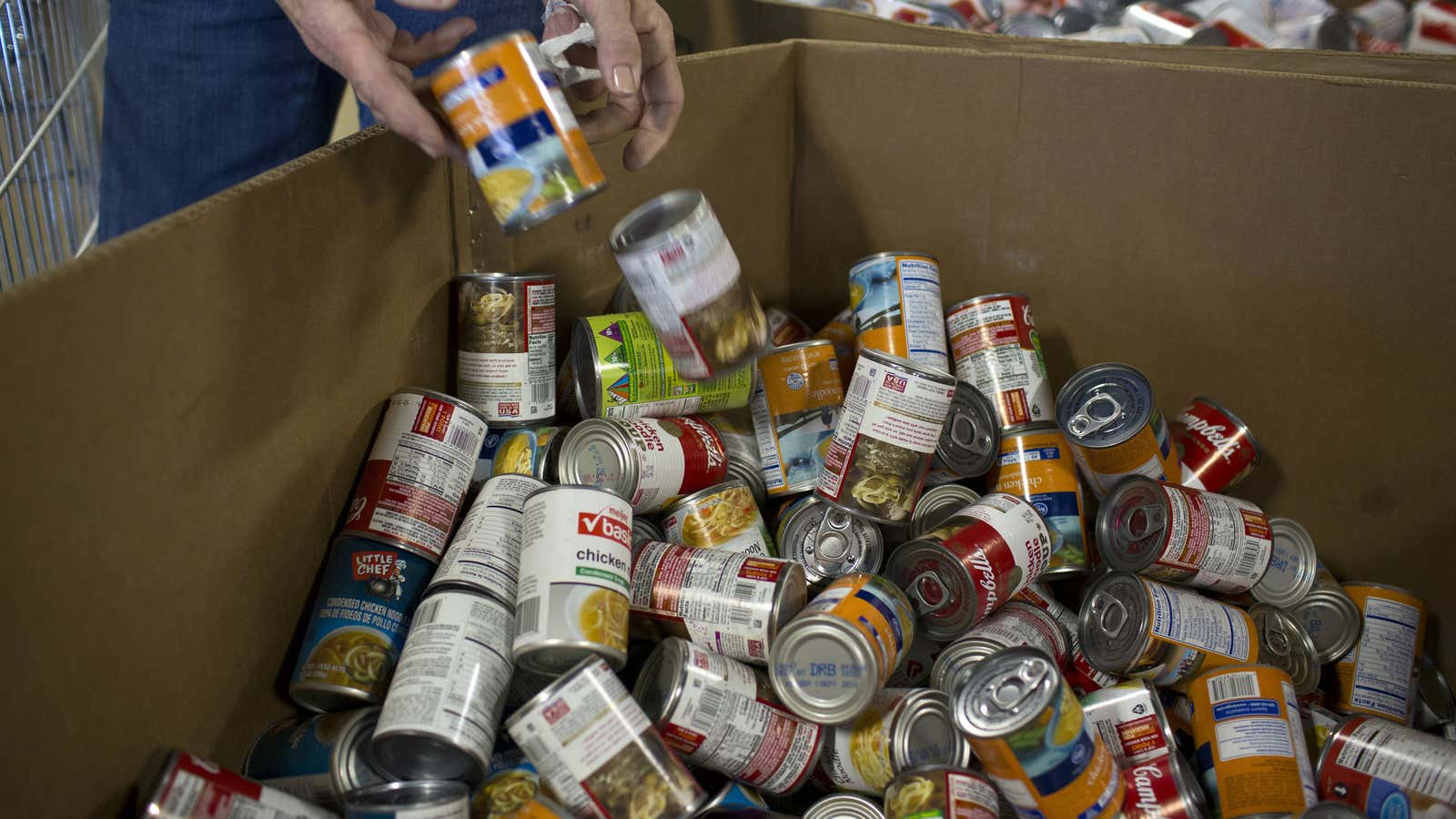If you think young Americans are lazy, spend five minutes talking with Maria Rose Belding.
The 20-year-old American University sophomore is the co-founder of MEANS Database, which connects people, organizations, and businesses with extra food with food banks and pantries that need it. In its first year, the food recovery notification system rescued about 4,000 pounds of food; became the first non-profit to win the GW New Venture Competition; and just took home a $10,000 prize from L’Oreal Paris through its Women Of Worth campaign. (At the L’Oreal Paris celebration event last week, Belding was the youngest of the 10 honorees.) It’s also figuring out how to make enough money to become self sufficient, a rarity for non-profits.

MEANS operates through both a website and an app, creating a simple system: A donor lists what’s available, donees nearby get notifications, someone claims it and arranges for pick-up. As a high school freshman, Belding was volunteering at a local soup pantry in her hometown in Iowa, when she watched the director scramble to find recipients for the 10,000 boxes of macaroni and cheese a church had donated. Not everything found a home before the expiration date, and a lot ended up in the trash.
In the world of food waste, this is the oft-cited paradox: There are 48 million Americans living in food insecurity, meaning that, at times during the year, these households were uncertain of having, or unable to acquire, enough food because they didn’t have sufficient money or other resources. Yet Americans waste an estimated 40% of the country’s food. It’s not a problem of supply or demand. It’s connecting the two.
Hunger is a problem hitting more people than most realize, including college students. “We have several campus food pantries on MEANS,” Belding tells Quartz. “We will be able to funnel food to the same kids we sit in class with.”
Belding’s idea didn’t become a reality, though, until she met her co-founder, Grant Nelson. He developed the technology while she found the donors, food banks, and pantries that would use the database.
The technology and wide reach—it currently has over 200 donor and recipient accounts representing more than 2,000 partner agencies and programs, spread out over 27 states—are largely what makes MEANS different from other food rescue organizations. City Harvest, for example, provides a similar service in New York, rescuing a whopping 50 million pounds of food just this year. But it works at a larger scale and arranges the legwork itself, like matching and transporting donations with food kitchens that need them. The MEANS platform allows small organizations and individuals to participate on a scale that might be too small for an organization like City Harvest, but crucial to the people they help. Belding says nearly every donation finds a new home—the only one she could remember that didn’t was 23 individually wrapped cupcakes with a very short window of recovery time.

Thanks in part to wins like the one from GW ($42,500 in cash and $20,000 in prizes) and L’Oreal, MEANS now has a staff of 11 people, as well as 10 interns and volunteers. But, says Belding, “I’m not content to be chasing other people’s money.” So she and her team are working on a system to help them become less grant dependent.
While large retail donors don’t currently claim tax credits for their donation—they’re too small and localized to be worth the trouble—MEANS already tracks all the information they would need. ”For us, it’s a matter of keystrokes,” says Belding.
Companies can use it to get tax benefits, while MEANS—which is free for users—takes a small fee. ”We haven’t started executing it yet, but every conversation with retailers we’ve had has been, ‘You can build that?'”
Next year, Belding hopes to launch that program, grow and improve the one already in place, and create a public, searchable directory of food pantries. (She’s found that half the pantries she and her team have called list wrong numbers.)
This week, though, Belding is focused on finals. On top of the full-time hours she puts into MEANS—she didn’t want to say how many because her parents will read the story—she is still a student. And a very impressive one. Her report card this semester, she says, should be all As and A-minuses. “There might be a B-plus, but I’m hoping not.”
